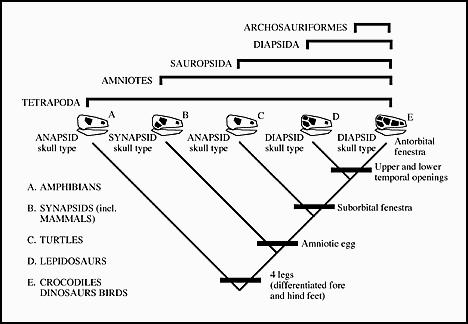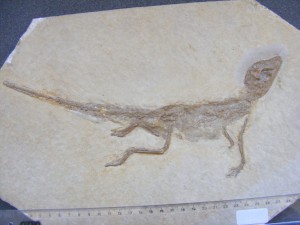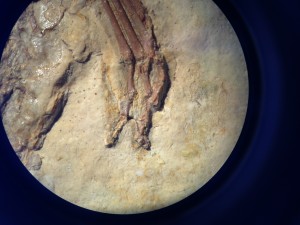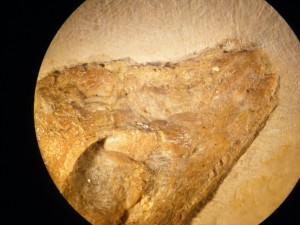Dwarf crocodiles in Munich
This was originally posted at: http://blogs.egu.eu/palaeoblog/2013/04/04/dwarf-crocodiles-in-munich/
My PhD consists of two parts. The first is investigating the dynamics of biodiversity across the Jurassic/Cretaceous interval about 145 million years ago. I want to see if when we consider the biases of the fossil record whether there was a ‘hidden’ mass extinction, and what were the ecological, physiological or environmental factors that correspond to this. This involves looking at turtles, birds, dinosaurs, marine reptiles, lizards, snakes, crocodiles and any other tetrapod group at the time – that’s anything with four feet, flippers or wings (see previous post for an update on all this jazz).

The second part is a bit different, but sort of related. I’m revising the taxonomy (species-level identification) of a group of crocodiles called atoposaurids. These now-extinct crocs lived from the Late Jurassic right up until the end of the Cretaceous when a lot of other organism went extinct, such as marine reptiles and ammonites. The most awesome thing about them though, is that even when fully grown, they were often only less than half a meter long! Yep, dwarf crocodiles! I don’t care if they’re extinct, they’re cute, as far as fossils can get pretty much anyway. The other cool thing about them is that, although it’s uncertain presently, they may be related to the crocodiles which gave rise to modern ones (Neosuchia), so may provide clues as to how this lineage came to dominate and others did not. This is something I hope to shed a bit of light on at some point.
The last step I took in this side project of sorts was a trip to the collections in the Ludwig-Maximillan University in Munich. Not only is this the home of Richard Butler and his talented team, who work on similar aspects of Palaeo to me, and the European Geosciences Union, and my mates were having a stag do, but they have atoposaurids there! There’s a couple of casts of specimens there, some of which the original specimens have been lost during the war (the real reason why war sucks, obviously), but the one I most wanted to see was a lovely specimen of a croc called Alligatorellus beaumonti, which the original author of gave the subspecies name of bavarivcus to distinguish it from its French relative of slightly different proportions. Preserved on a slab of platy limestone, this was one squished individual, moderately preserved with quite a bit intact including the skull (really useful to vertebrate palaeontologists), and a great li’l specimen to learn the anatomy of these weird crocs. Quick thanks to Oliver Rauhut for granting me access to his collections so speedily.
Seeing as it hadn’t been looked at since 1971, and only then by some German dude who conveniently wrote the description in German, I figured it needed a fresh pair of eyes looking at it, using a pretty sweet microscope and with our current understanding of croc anatomy. There’s a few photos below, and I’m in the process of drawing the whole specimen as well as a few more detailed parts from photos of it, which I hope to use in a paper at some point in the future.






The next step in this project is looking at specimens in Cambridge, Oxford, London (looked at before but need to go back – there’s a lot!), Dorset and the Isle of Wight, as well as internationally at numerous locations in Europe and Moscow where many under-studied specimens dwell (two grant apps for this just submitted!) Once I’ve looked up enough, I’ll be able to create a numerical matrix that computers can analyse to determine the relationships of the different species, something I’ll go into when I get around to doing it. I can use this as well to figure out how atoposaurids as a group fit in with the huge tree of crocodylomorphs. Hopefully as well, there’ll be a couple of new specimens I can describe, or identify things which were missed in previous studies. Watch this space!
From the colour and texture, that looks like the Solenhofen Lithographic limestone your beastie is in? (Which, TBH, is what I suspected you’d be doing, if you were looking at JU rocks in southern Germany. I certainly did. I didn’t find *my* Archaeopteryx specimen either. Boo!)
Correct! This one is from Solnhofen, and there are other specimens from the similar limestones in Cerin, France, which I’m hoping to go and check out shortly (grant application submitted!) These limestones are actually found in Spain too, and combined with France and Bavaria, that’s where you find Atoposaurus, Alligatorellus, Alligatorium, and Montsecouschus specimens. Strangely, Theriosuchus, the most diverse genus, is found in different rock types from around Europe and in much higher abundance (as well as Thailand..)
Have you studied these rocks before then..?
Studied … well, I grew up on the Upper Estuarine and Northampton Sands of central England, which are approximate contemporaries, but apart from getting into geology because of them (and Scottish mountains), I’ve never really studied them. I make my living largely on late Jurassic clastics of the North Sea, or more precisely on the hydrocarbons in their pore spaces. But that’s more to do with understanding drilling technology than detailed geological work.
I was in Solenhofen because I’d booked leave for the 1999 eclipse in 1991, but my friend who I was going to go touring with blew up the engine of his car 3 days before we were due to leave. So … tent ; rucksack ; InterRail card ; and after the eclipse I went to various geological wet dreams, including Solenhofen and the Nordlingen Ries crater.
It beats working for a living.